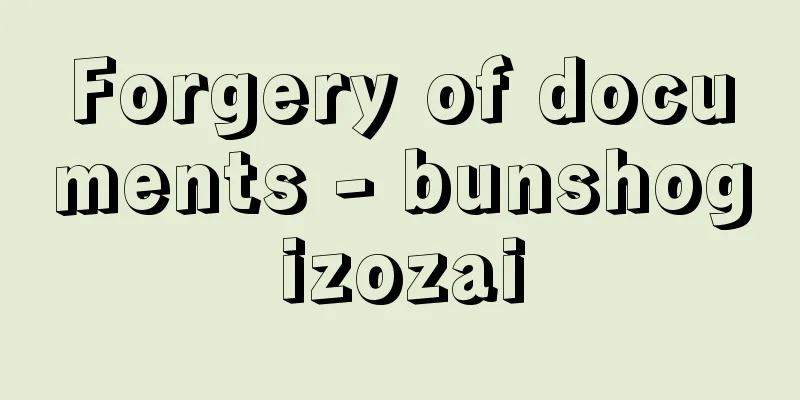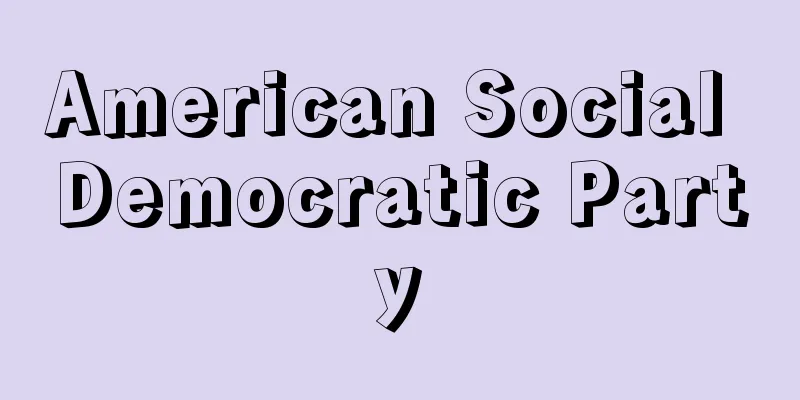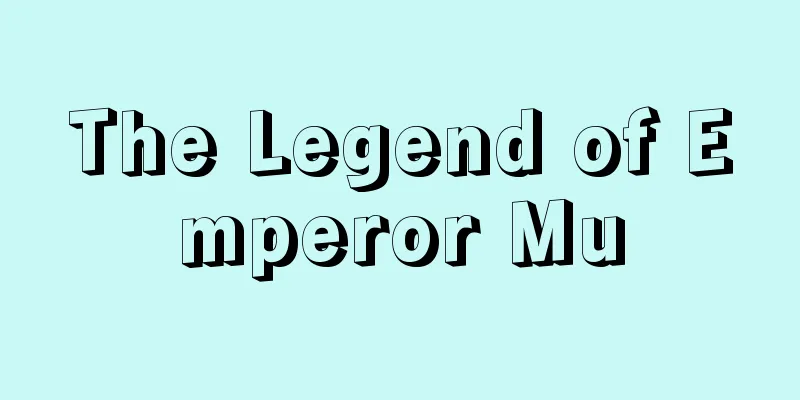Forgery of documents - bunshogizozai

|
It is a crime to forge or alter documents, create false documents, and use such documents (Articles 154 to 161 of the Penal Code). Because documents play an important role in social life, such as economic transactions, the purpose of this crime is to protect social trust in documents. The current Penal Code divides documents into three categories: Emperor documents, public documents, and private documents, and sets different statutory penalties depending on the nature of the act. [Tetsuro Nawa] Significance of the documentA document is an expression of intent or ideas written on an object using letters or other legible symbols. In positive law, documents (broad definition) are divided into documents using phonetic symbols such as letters (narrow definition) and pictures using pictographic symbols. Documents do not include records or audio tapes that contain recorded sounds, but legal precedents have interpreted automobile registration files, which are electromagnetic records, as "notarized documents." A document has traditionally been understood to be something that is an original, but with the recent development of copying technology, there are legal precedents that interpret photocopies as documents, not just copies. [Tetsuro Nawa] Counterfeiting ConceptTheoretically, there are two types of forgery: physical forgery, where a person without the authority to create a document creates a document in someone else's name, and intangible forgery, where a person with the authority to create a document creates a document with content contrary to the truth (the former is called the creation of an unauthentic document, and the latter is called the creation of a false document). The current Criminal Code broadly punishes both physical and intangible forgery of public documents that should be created by public officials or public offices, but as a rule, only physical forgery is punished for private documents. The distinction between "forgery" and "alteration" is that the former is when an unauthentic document is created, and the latter is when a non-essential part of a genuine document is changed, but there are also two types of alteration: physical and intangible. "Use" refers to the use of an unauthentic or false document. [Tetsuro Nawa] Crime TypeUnder the current Criminal Code, with regard to official documents, there are the following crimes: forgery of an imperial edict (a document from the Emperor) (Article 154; life imprisonment or imprisonment for not less than three years), forgery of an official document (Article 155; imprisonment for not less than one year and not more than 10 years for forgery or alteration of a sealed official document, and imprisonment for not more than three years or a fine of not more than 200,000 yen for forgery or alteration of an unsealed official document), making a false official document (Article 156; the same statutory penalties as Articles 154 and 155), false entry in a notarized deed, etc. (Article 157; imprisonment for not more than five years or a fine of not more than 500,000 yen; however, in the case of a license, identification card, or passport, imprisonment for not more than one year or a fine of not more than 200,000 yen), and uttering a forged official document (Article 158; the same statutory penalties in accordance with the distinction between the previous four articles). Regarding private documents, there are crimes of forgery of private documents (Article 159; forgery or alteration of a private document with a seal is punishable by imprisonment for a period of three months to five years, while forgery or alteration of a private document without a seal is punishable by imprisonment for a period of one year or a fine of a maximum of 100,000 yen), creation of a false private document (Article 160; imprisonment for a period of three years or a fine of a maximum of 300,000 yen), and use of a forged private document (Article 161; the same statutory penalties apply according to the distinction between the previous two articles). Furthermore, with the partial revision of the Penal Code in 1987, the crimes of making a false record in the original of an electromagnetic notarized deed and offering a false record in the original of an electromagnetic notarized deed were added to Articles 157 and 158 of the Penal Code as part of computer crimes, and the crimes of illegally creating and offering an electromagnetic record was newly created as Article 161-2 of the Penal Code. [Tetsuro Nawa] [References] | | |Source: Shogakukan Encyclopedia Nipponica About Encyclopedia Nipponica Information | Legend |
|
文書を偽造・変造したり、虚偽文書を作成したり、これらの文書を行使する罪(刑法154条~161条)。文書は経済取引など社会生活において重要な機能を有するので、文書に対する社会的な信用を保護するのが本罪の目的である。現行刑法は文書を天皇文書、公文書、私文書に三分するとともに、行為の態様により法定刑に差を設けている。 [名和鐵郎] 文書の意義文書とは、文字その他可読的符号を用いて物体上に記載された意思または観念の表示をいう。実定法上、文書(広義)には、文字など発音的符号を用いた文書(狭義)と、象形的符号を用いた図画(とが)とがある。文書には、音声自体を録音したレコード、録音テープなどは含まれないが、判例では、電磁的記録物である自動車登録ファイルも「公正証書」にあたると解されている。文書とは原本的なものであると解されてきたが、最近の複写技術の発達に伴い、写真コピーは単なる写しではなく、文書にあたると解する判例がある。 [名和鐵郎] 偽造の概念偽造には、理論的に、文書につき作成権限を有しない者がかってに他人名義の文書を作成する有形偽造と、作成権限を有する者が真実に反する内容の文書を作成する無形偽造とがある(前者を不真正文書の作成といい、後者を虚偽文書の作成ともいう)。現行刑法は、公務員または公務所が作成すべき公文書につき有形偽造と無形偽造を広く処罰しているが、私文書については原則として有形偽造だけを処罰している。なお、「偽造」と「変造」との区別は、前者が不真正文書を作成する場合であり、後者は真正文書の非本質的部分に変更を加える場合であるが、変造にも有形変造と無形変造の2種類がある。また、「行使」とは、不真正文書または虚偽文書を使用することをいう。 [名和鐵郎] 犯罪類型現行刑法には、公文書に関しては、詔書(天皇文書)偽造罪(154条。無期または3年以上の懲役)、公文書偽造罪(155条。有印公文書偽造・変造罪は1年以上10年以下の懲役、無印公文書偽造・変造罪は3年以下の懲役または20万円以下の罰金)、虚偽公文書作成罪(156条。154条および155条の法定刑に同じ)、公正証書等不実記載罪(157条。5年以下の懲役または50万円以下の罰金。ただし、免状、鑑札、旅券の場合は1年以下の懲役または20万円以下の罰金)、偽造公文書行使罪(158条。前4条の区別に従い同一の法定刑)がある。また、私文書に関しては、私文書偽造罪(159条。有印私文書偽造・変造罪は3月以上5年以下の懲役、無印私文書偽造・変造罪は1年以下または10万円以下の罰金)、虚偽私文書作成罪(160条。3年以下の禁錮または30万円以下の罰金)、偽造私文書行使罪(161条。前2条の区別に従い同一の法定刑)がある。さらに1987年(昭和62)の刑法一部改正によって、コンピュータ犯罪の一環として、刑法157条、158条のなかに、電磁的公正証書原本不実記録罪、不実記録電磁的公正証書原本供用罪が追加されるとともに、刑法161条の二として、電磁的記録不正作出及び供用罪が新設された。 [名和鐵郎] [参照項目] | | |出典 小学館 日本大百科全書(ニッポニカ)日本大百科全書(ニッポニカ)について 情報 | 凡例 |
<<: Window dressing - window dressing
>>: Crime of destruction of documents
Recommend
Dolichopodidae
…A general term for insects belonging to the fami...
Forensic psychiatry
It is an area of psychiatry related to laws such...
007 Series - Zero Zero Seven Series
An international action and adventure series starr...
Main household - Shuko (English spelling) zhu-hu; chu-hu
Refers to landowners in the Song Dynasty of China....
Praphat Charusathien (English)
...The construction of higher education instituti...
John Maynard Keynes
A leading British economist of the 20th century. ...
The Twenty-Four Filial Piety of Great Japan
A collection of 24 volumes in 12 books written in ...
Non-harmonic ratio
When there are four points A, B, C, and D arrange...
SNP - Single Nucleotide Polymorphism
A single nucleotide polymorphism. It is pronounced...
Common wheat
A perennial crop of the grass family, it is the st...
Star - Seishuku
[1] [noun] star. A group of fixed stars in the cel...
chirognomie
... Famous palmists in modern times include S. D&...
Murashu - Suguri
One of the ancient surnames. Also written as Shum...
Paraphimosis (English spelling)
What is the disease? Genuine ( New life ) When th...
pleins pouvoirs (English spelling) pleins pouvoirs
…The power of attorney must have a revenue stamp ...








![Takarabe [town] - Takarabe](/upload/images/67cc1e9239e01.webp)
